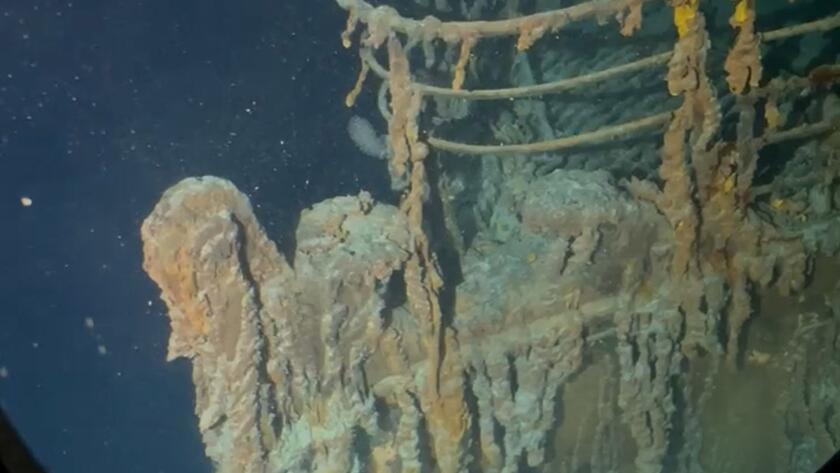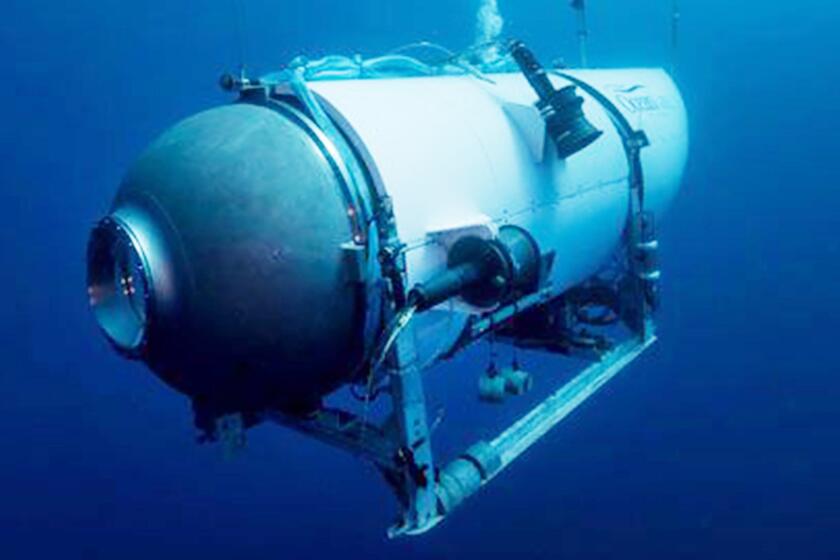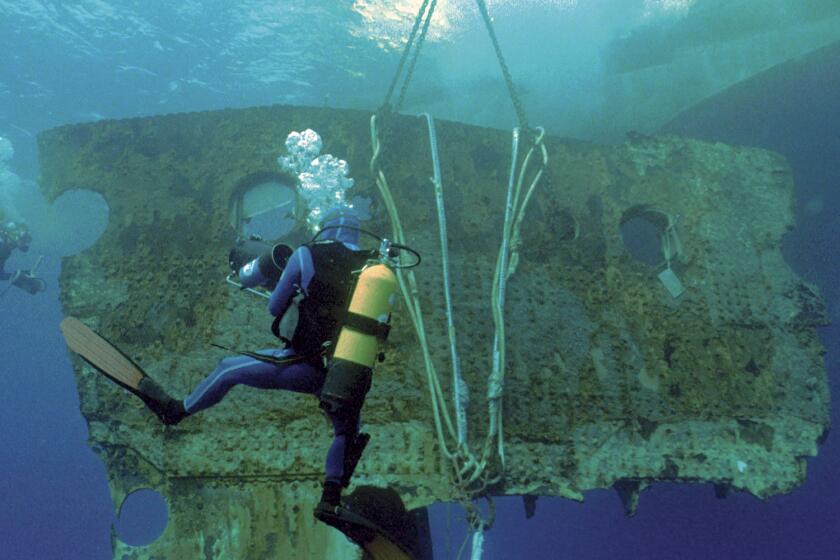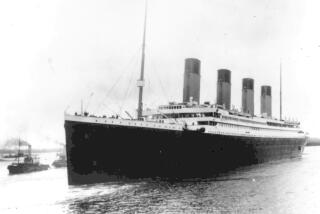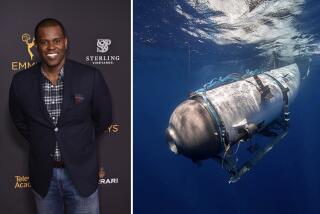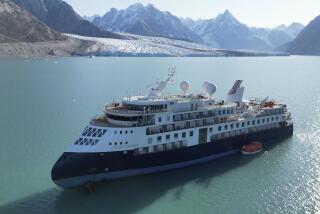Frozen feet, cramped quarters: What it’s like in the Titan submersible

If you stay back from the porthole and remain on the rubber mat, you can stay dry in the Titan submersible.
You can’t stand up, because it’s not tall enough for that. There’s enough room, however, to lie down or crouch.
But if you press up close to the porthole in the titanium dome at the front of the vessel to gaze at the wreckage of the Titanic, it gets extremely cold. Condensation builds inside the domed area of the submersible, adding to the discomfort, according to Alfred Hagen, an explorer and documentary filmmaker who took trips on the craft in 2021 and 2022.
Alfred Hagen ventured down in the Titan with one of the passengers who is currently missing. Here’s how he described the trip.
On those journeys, the conditions chilled Hagen’s fellow passenger, the French explorer Paul-Henry Nargeolet — a man known as “Mr. Titanic” for his more than 30 trips to the wreck site.
“He sat right on the nose looking through the porthole. His feet were frozen and numb and soaked,” Hagen told The Times. Hagen embarked on his dives wearing Ugg boots lined with sheepskin; he planned to buy a pair for Nargeolet before the explorer returned to Titanic this year.
Nargeolet is one of five people missing since Sunday when the Titan lost contact with the Canadian research vessel Polar Prince less than two hours into its dive.
“All I can think about over and over again is that I meant to send him a pair of those Uggs and I never got around to it, and I’m torturing myself every day. He could have suffered less and died maybe with his feet warm,” Hagen said. He called it a “recurring nightmarish feeling.”
Still, Hagen said he has hope that Nargeolet and his crewmates on the missing Titan submersible could still be saved, though time is running out as the occupants use up the 96 hours’ worth of oxygen in the vessel.
Banging sounds have reportedly been detected in the remote area of the Atlantic where a tourist submersible with five people aboard went missing.
A Canadian aircraft with sonar capabilities detected underwater noises Tuesday night near the dive site.
The Titan was designed and operated by OceanGate Expeditions, which offers commercial trips down to the Titanic for around $250,000.
Though a CBS News correspondent who took a trip on the Titan called it “jerry-rigged” due to its use of a video game controller among other “improvised” fixes, Hagen had a more positive view of the operation. He described OceanGate’s efforts as experimental — the exact type of innovation it takes to move technology forward. He called OceanGate Chief Executive Stockton Rush, the pilot of the missing submersible, a “visionary inventor.”
He also said that everyone who took part in his voyages understood the risks.
“We all did it at great risk. We all signed multiple documents. They all said this is an experimental craft. It has not gone through any regulatory process. We recognize the possibility of extreme injury or death,” Hagen said. “There were frank conversations... Participating in this endeavor could have fatal consequences. That was articulated on multiple occasions.”
Hagen, the president of a construction and development firm, described the trips as “seminal” experiences in his life.
Hagen shared video with The Times taken through the porthole of the Titan, showing the rusted wreckage of the bow of the Titanic. Passengers in the sub talked and joked as they looked out.
In one of his trips down to the site of the shipwreck about 13,000 feet below the ocean surface, Hagen said the craft lost communication with its mother ship more than once. The submersible communicates with the ship via text messages sent on a computer.
“We did lose that capacity and that’s not uncommon,” he said. “The ship is often lost from the mother ship. It just means they lost contact with it. We were frequently out of contact. Sometimes they knew where we were, sometimes they didn’t.”
He was in the submersible for 14 hours on that trip.
“I can’t even imagine being in there for the number of days they’ve been down there,” he said.
Hagen said he has no regrets about the experience he had last year and the year before.
“I wanted to see the Titanic. That was a dream, and it was an incredible experience.”
A search-and-rescue mission is underway after a submersible used for tourist expeditions to view the Titanic wreck went missing Sunday with five aboard.
More to Read
Sign up for Essential California
The most important California stories and recommendations in your inbox every morning.
You may occasionally receive promotional content from the Los Angeles Times.

